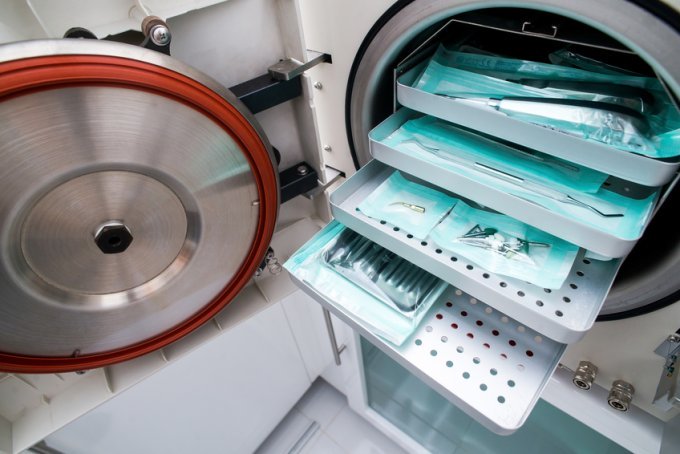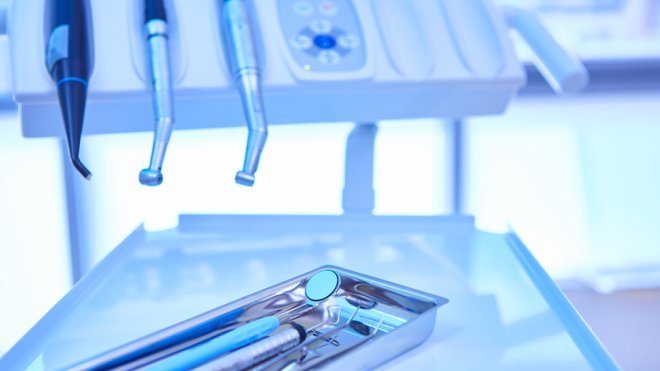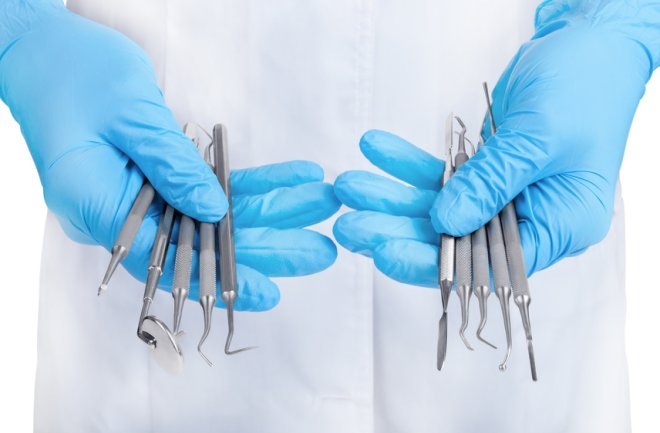
The preferred method for sterilisation of medical instruments is by using saturated steam, under pressure at the highest temperature compatible with the instrument. That is why a vacuum autoclave (type B) is recommended for sterilising wrapped solids instruments, porous loads and hollow instruments.
What are the criteria to choose an autoclave?

The chamber size can vary from 8 to 24 liters. The bigger the chamber the greater the capacity for instruments, although a smaller chamber will usually mean faster overall cycle times. Warning: a 24-liter unit will consume more energy. so it is important to choose the autoclave according to your needs. You will then optimize your energy consumption and the initial investment will be reduced. Two smaller autoclaves are sometimes preferable to a single system. This also allows a backup device if a failure occurs.

The quicker the cycle, the quicker the turnaround of instruments. Ensure the autoclave has the appropriate choice of cycles to meet your sterilising requirements.

Check the period of warranty offered with the autoclave. Those with two year warranties offer increased peace-of-mind and will save you money. If the manufacturer does not have a local technical service, you will need to hire a qualified technician to revise your device.

The price of the autoclave goes along with its reliability and its technical specifications. European and American brands offer higher quality at relatively high costs, while Chinese and Korean brands are more competitive with variable quality. After sales service can be complicated if you choose a cheaper device.

Type B autoclaves may have accessories that are very useful in some cases. For example, some have an incorporated printer to ensure the traceability of sterilized objects.
Who are the dental manufacturers of autoclaves?
- Acteon
- Anthos
- Apoza
- BMS Dental
- Carlo di Giorgi
- Cristofoli
- Dental X
- Equs
- Eschmann
- Euronda
- Faro
- Fona
- Getinge
- Gnatus
- Melag
- Midmark
- Mocom
- Prestige Medical
- SciCan
- Sirona
- Stern Weber
- Tau Steril
- Tecno-gaz
- Trident Dental
- Tuttnauer
- W&H
- Zhermack
- Your needs
First, write a list of what you need to sterilise in your autocalve. Will you only place handpieces for cleaning or are you also planning on sterilising other items such as wrapped or hollow instruments in the machine? Also ask how many instruments you need to place to maximise space. Not enough room will mean extra cycles and too much room is a waste of water and energy. You want every cycle to be filled up as efficiently as possible. This information will then determine the optimal chamber size you require.
- Size Matters
If you haven’t already decided on the allotted bench space for your autoclave you’ll need to make this decision fairly quickly. Find out how much room you have and look for autoclaves within those dimensions. This then needs to relate back to step 1 to make sure the chamber size is large enough to sterilise all the instruments you need.The space allocated will dramatically narrow down your search for an autoclave. You’ll also want to make sure there is plenty of room to open the autoclave door allowing staff to easily access instruments. […]
- Cycle Times
How often does your practice sterilise equipment and how quickly do you need it? Machine cycle times and sizes generally vary between 10 – 40 minutes for the complete cycle run. […] The difference between the machines and the size loads will also need to be taken into consideration. You don’t want to make patients wait and leave you running behind schedule because you‘re waiting for equipment to be sterilised.
- Plumbing in or stand alone machines
One of the most frequent questions we get from dentists is whether to buy an autoclave that’s plumbed in or should they buy a stand-alone machine. With a plumbed in machine the autoclave will fill and empty itself as it’s attached to plumbing lines for drainage. On the other hand the stand alone machines need to have distilled water added manually plus staff also need to drain the machine, this can be unproductive on time management for your staff.
If you want to opt for a plumbed in machine and don’t already have the correct plumbing in place then you’ll need to budget this cost, but once it’s done then your staff will be able to work more productively as they won’t need to fill in the drain the machine manually. With the stand alone machine you are only able to use distilled water so if you don’t already have one you also need to purchase a water distiller.
- Printers & Data Logs
All autoclaves have a printer and data log capabilities. […]
- Price
How much do you have to spend? This will outline the number of features that will be available to you on this budget. Plus think about operational costs such as servicing and the water and electricity bills that will happen every time you run the machine. […]
- Warranties, Guarantees & Quality Assurance
It’s best to check the warranty and guarantee of the machine you are wishing to purchase. […] All autoclaves also are manufactured to ISO standards and CE marking approved. […]
- Testing & Maintenance
To keep your machine running optimally you complete a daily test cycle as per manufacturer’s regulations. It’s also recommended to have your autoclave professionally serviced every 12 months. […] Better maintenance will keep your steriliser running longer avoiding unnecessary breakdowns leaving you without a machine.
Source: http://www.dentec.com.au/choosing-the-best-autoclave-for-your-dental-practice/




